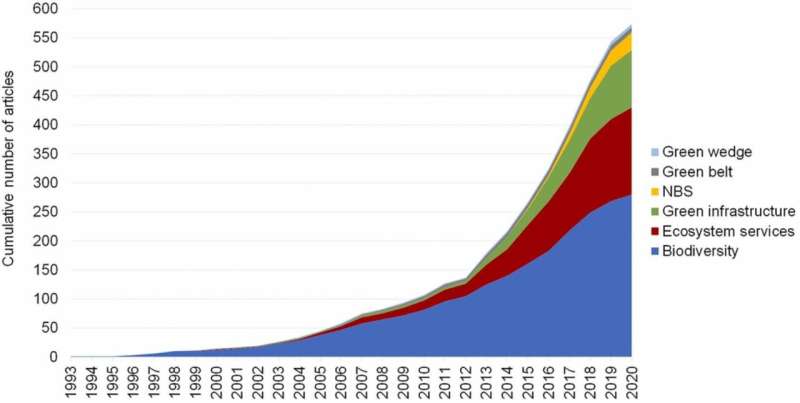How Stockholm applied greening concepts and what we can learn from it

Based on an evaluation of over 500 academic articles, an international research team has traced the application of greening concepts in the context of Swedish planning and particularly in the Stockholm metropolitan region. The researchers, who include Professor Christian Albert's research lab Planning Metropolitan Landscapes at Ruhr-Universität Bochum (RUB), have drawn up recommendations for urban planning. One of their recommendations is to use scientific expertise and to focus on narratives that emphasize the importance of urban green spaces for human well-being. They argue that this is a way to gain momentum for ideas and action. The researchers published their findings in the journal Urban Forestry & Urban Greening on 26 April 2022.
Scant works on real-world planning processes
"We examined what changes we could find in the academic literature with regard to topics, methods and practical types of planning support," explains Dr. Blal Adem Esmail from the RUB research lab. 574 articles reflecting the extensive research on greening concepts in Sweden were included in the analysis. "The studies initially focused on biodiversity aspects, later on ecosystem services and more recently on nature-based solutions," says Christian Albert. "However, there are only a few works that deal with real planning processes."
For the Stockholm Metropolitan Region, population growth and densification, green space management and biodiversity conservation emerged as the most frequently addressed societal challenges. The most common type of greening is parks and (semi-)natural urban green spaces, followed by water bodies and green spaces associated with so-called gray infrastructure such as roads and railway lines. "Overall, we found that there is a chronological correlation between the inclusion of greening concepts in policy discourses and their adoption in academic publications with a focus on spatial planning practice," says Blal Adem Esmail.
Recommendations for implementation in practice
The researchers derive recommendations for practice from their findings: in the first step, planners should draw on both the wide range of existing evidence and the established research and practice community on greening concepts. Translation is still needed to harness this scientific knowledge; here, academia can also play a crucial role.
Secondly, the currently emerging narratives that present the conservation and sustainable use of biodiversity and ecosystem services as contributing to human well-being and as solutions to societal challenges offer many opportunities to popularize ideas and actions.
Thirdly, the study highlighted the wide variety of methods and data already available for practical implementation of greening concepts, including monitoring of changes in biodiversity and ecosystem services. "These methods could be adapted for planning applications and integrated into decision support systems, in order to better understand the status and trends of ecosystems and their services in Stockholm, and to inform studies of future development trajectories and their likely impacts on people and nature," concludes Adem Esmail.
More information: Blal Adem Esmail et al, Greening cities through urban planning: A literature review on the uptake of concepts and methods in Stockholm, Urban Forestry & Urban Greening (2022). DOI: 10.1016/j.ufug.2022.127584
Provided by Ruhr-Universitaet-Bochum




















